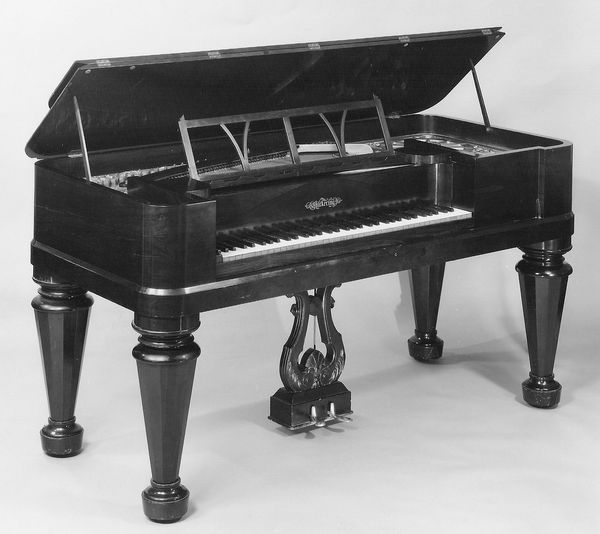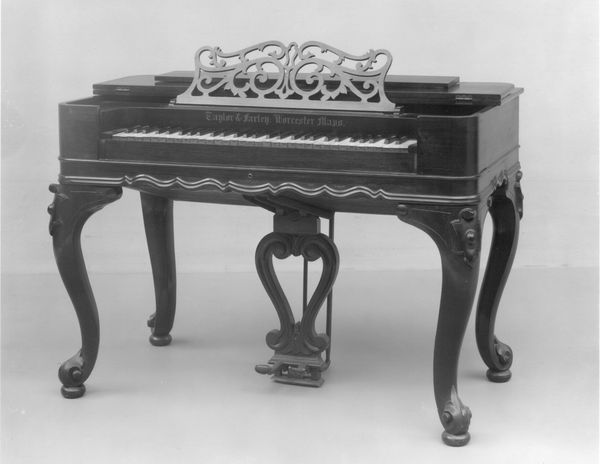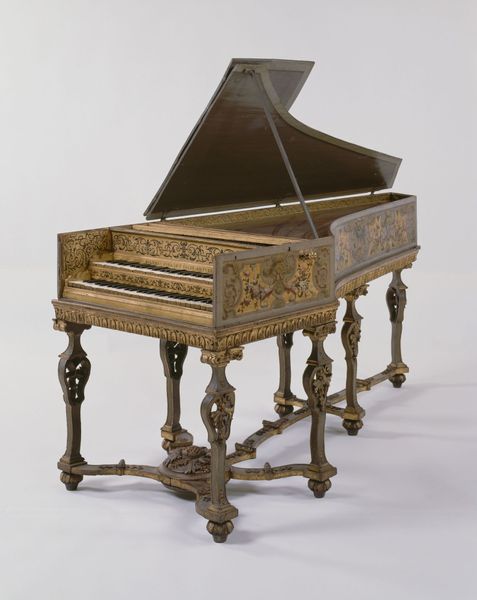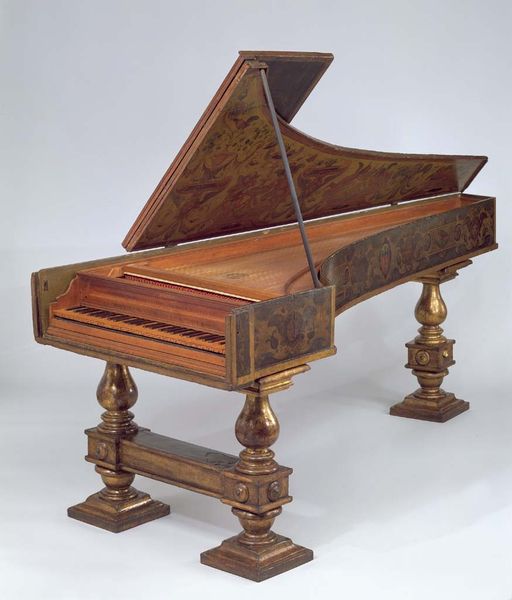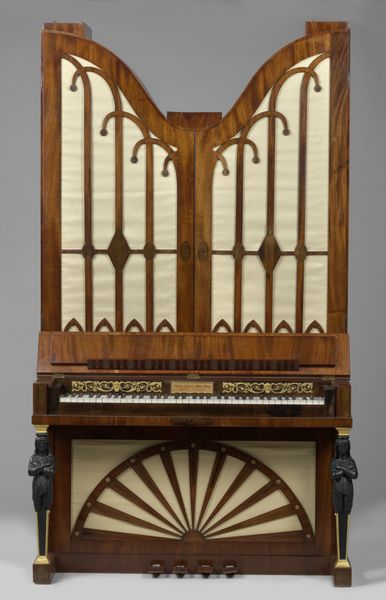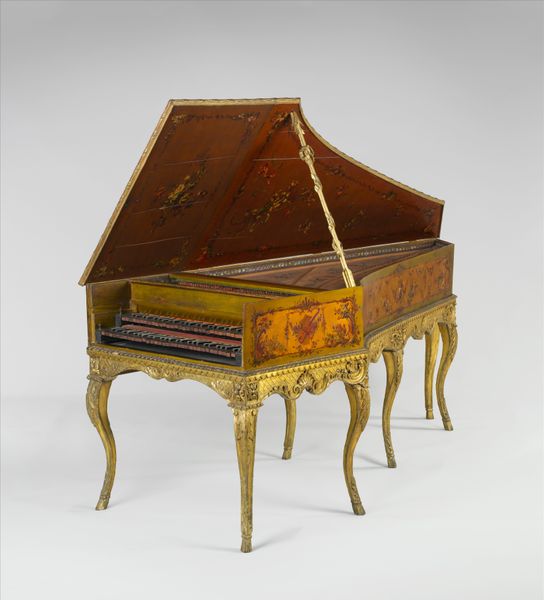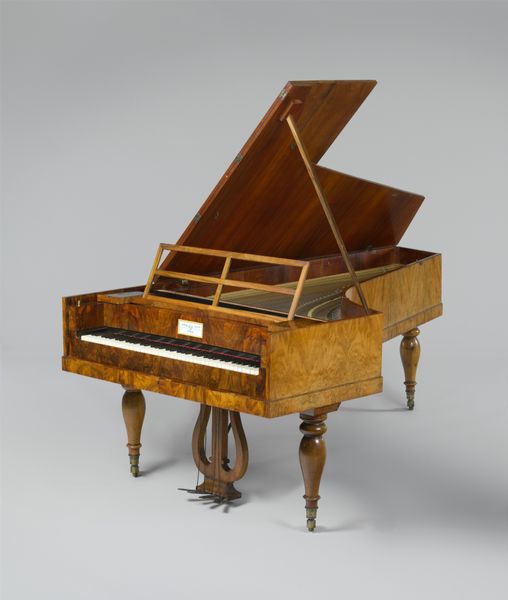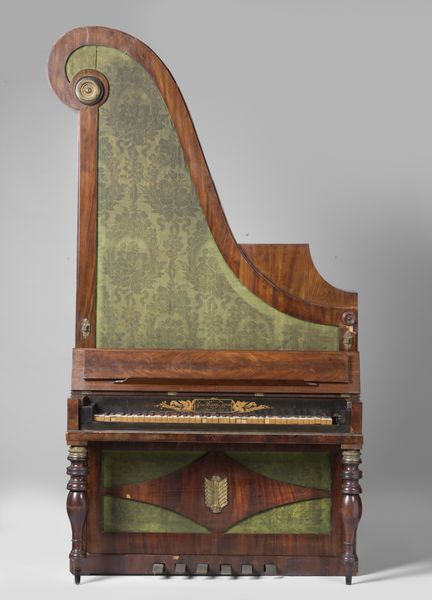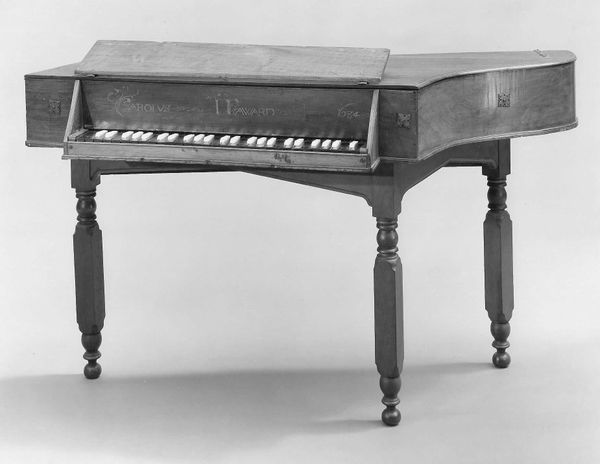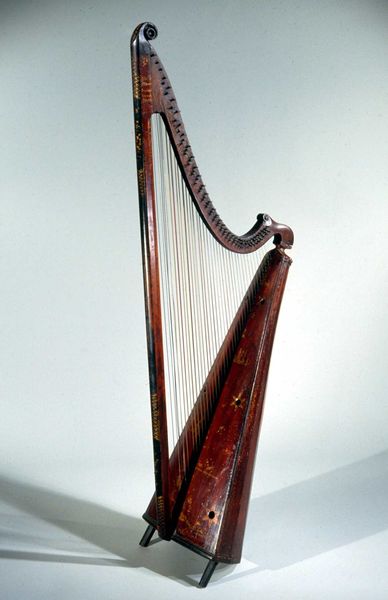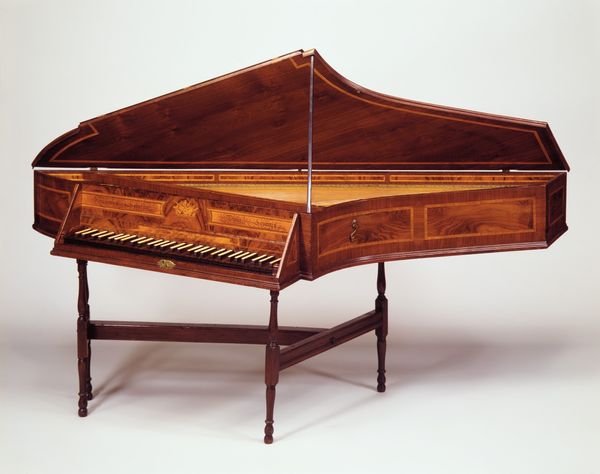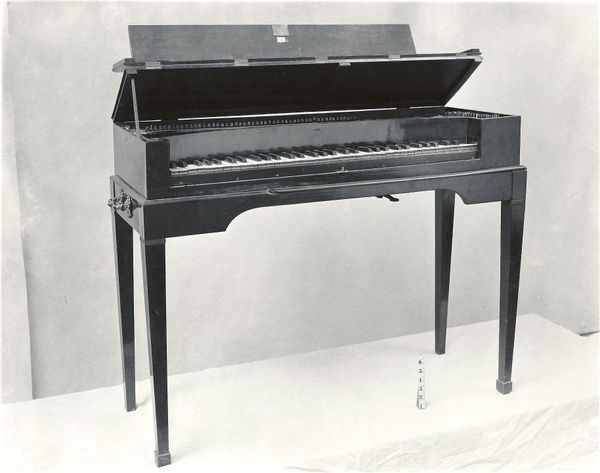
wood
#
neoclacissism
#
sculpture
#
furniture
#
historic architecture
#
traditional architecture
#
building art
#
geometric
#
wood
#
musical-instrument
#
decorative-art
Dimensions: H.: 216 cm (85-1/4 in.); W.: 125.2 cm (49-3/8 in.); D. 63.6 cm (25-1/8 in.) Case w/o pedal mechanistm 37 cm
Copyright: Public Domain
Curator: Here we have an exquisite example of early 19th-century craftsmanship: Friedrich Bernhard Voigt’s “Upright Piano,” created in 1832. You can find this piece in the collection of the Metropolitan Museum of Art. Editor: It's incredibly ornate. The immediate impression is almost overwhelming—so many visual layers, the reddish wood grain contrasting against the light green panels. It gives a sense of grandiosity mixed with a touch of…I don’t know…restraint? Curator: I think the term you’re looking for is “Neoclassical.” The piano reflects that period's focus on incorporating elements of classical antiquity. Notice the architectural details—those fluted columns supporting the base, and the stepped crown-like features on top. These were all aspirational symbols of refinement, designed for a rising bourgeois class eager to display its cultural capital. Editor: Right, the structure does evoke temples. The geometric patterns feel very calculated and self-consciously refined. Also, that centralized burst motif—echoed both at the top and bottom. Does this emphasize the importance of symmetry? Curator: Precisely! This ordered sensibility extends into the political sphere as well. After the tumult of the French Revolution and the Napoleonic Wars, this piano can be seen as a kind of status symbol—evidence of renewed stability, and order restored. A piano was not just a source of musical entertainment but an object meant to signal elevated social standing. Editor: But there’s almost a tension, don't you think? The material itself, this darkly figured wood—mahogany, perhaps— possesses a natural, organic quality which is subtly fighting the rigidity of the overall structure. Also, the way the golden details are inlaid across, the overall surface shimmers beautifully. Curator: It’s fascinating how those textures draw the eye. When originally produced, that highly polished finish would’ve stood out in even the most lavish interiors. Voigt's piano serves as a poignant illustration of a specific social class' aspirations as well as decorative preferences of the time. Editor: Looking at it, I can almost hear the faint echoes of a sonata, feel the subtle creak of the keys beneath my fingers...It really embodies the spirit of the age, both musically and socially. Curator: Agreed. Hopefully, this examination allows all our visitors here to develop their appreciation not only of craftsmanship but for the complicated dance between art, function, and society throughout history.
Comments
No comments
Be the first to comment and join the conversation on the ultimate creative platform.

